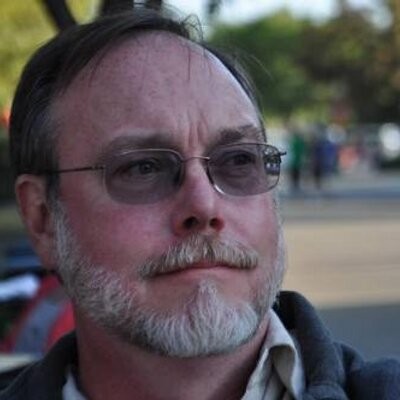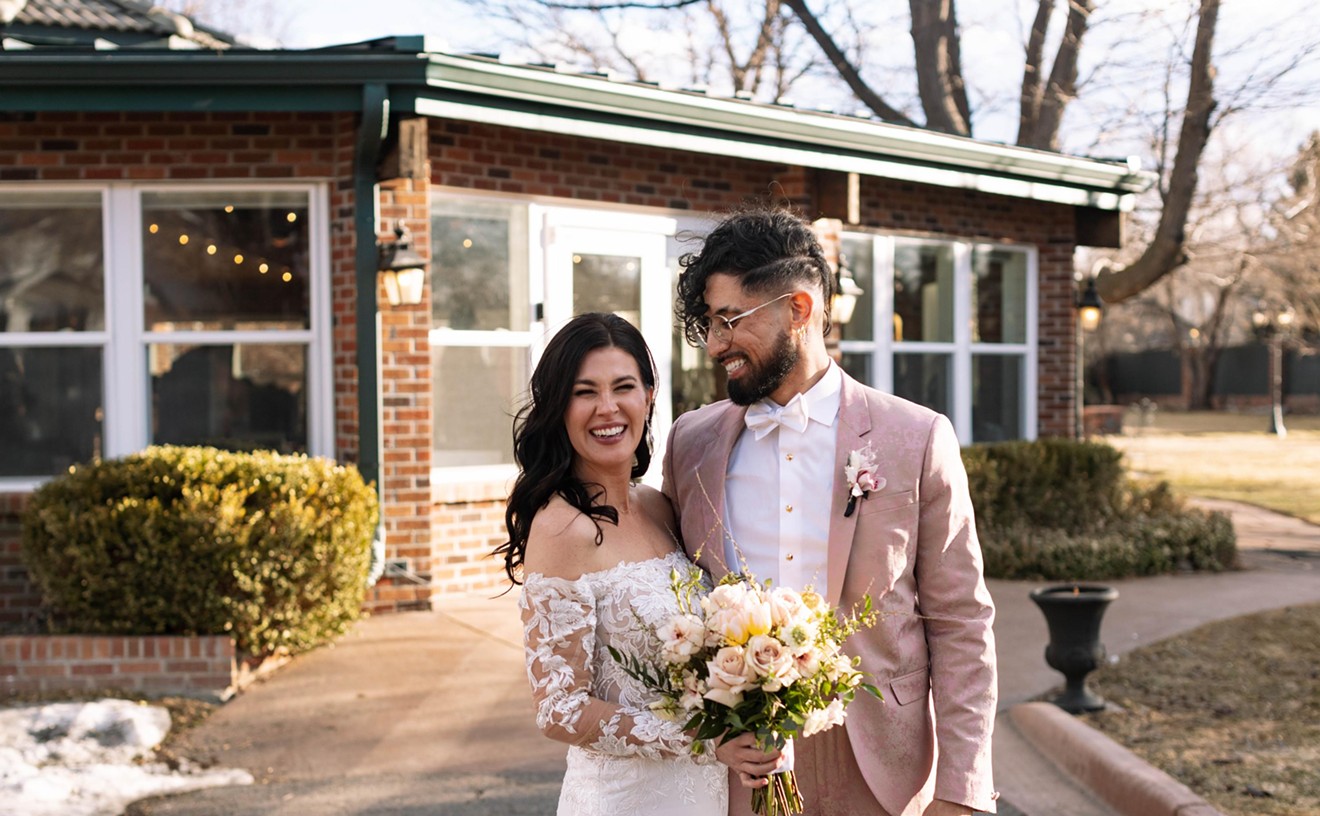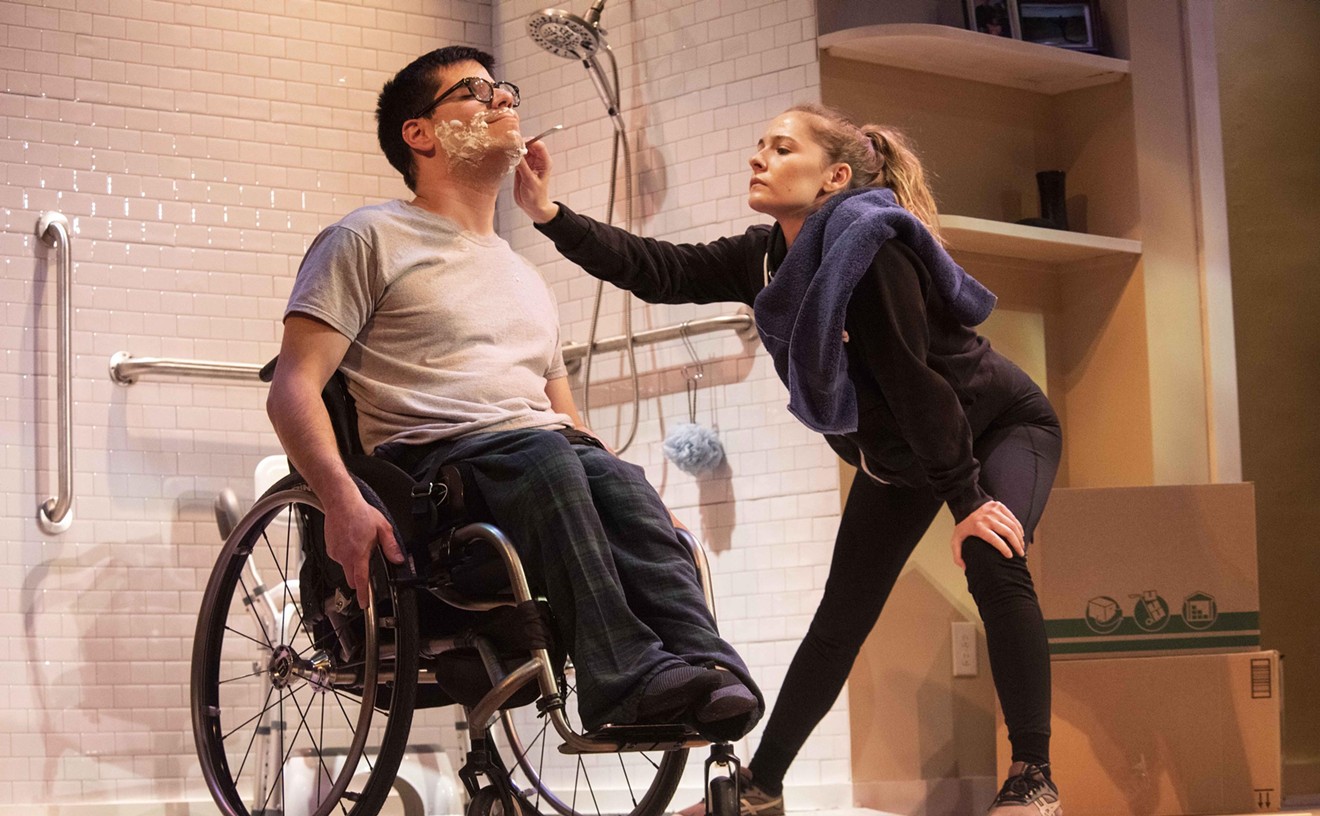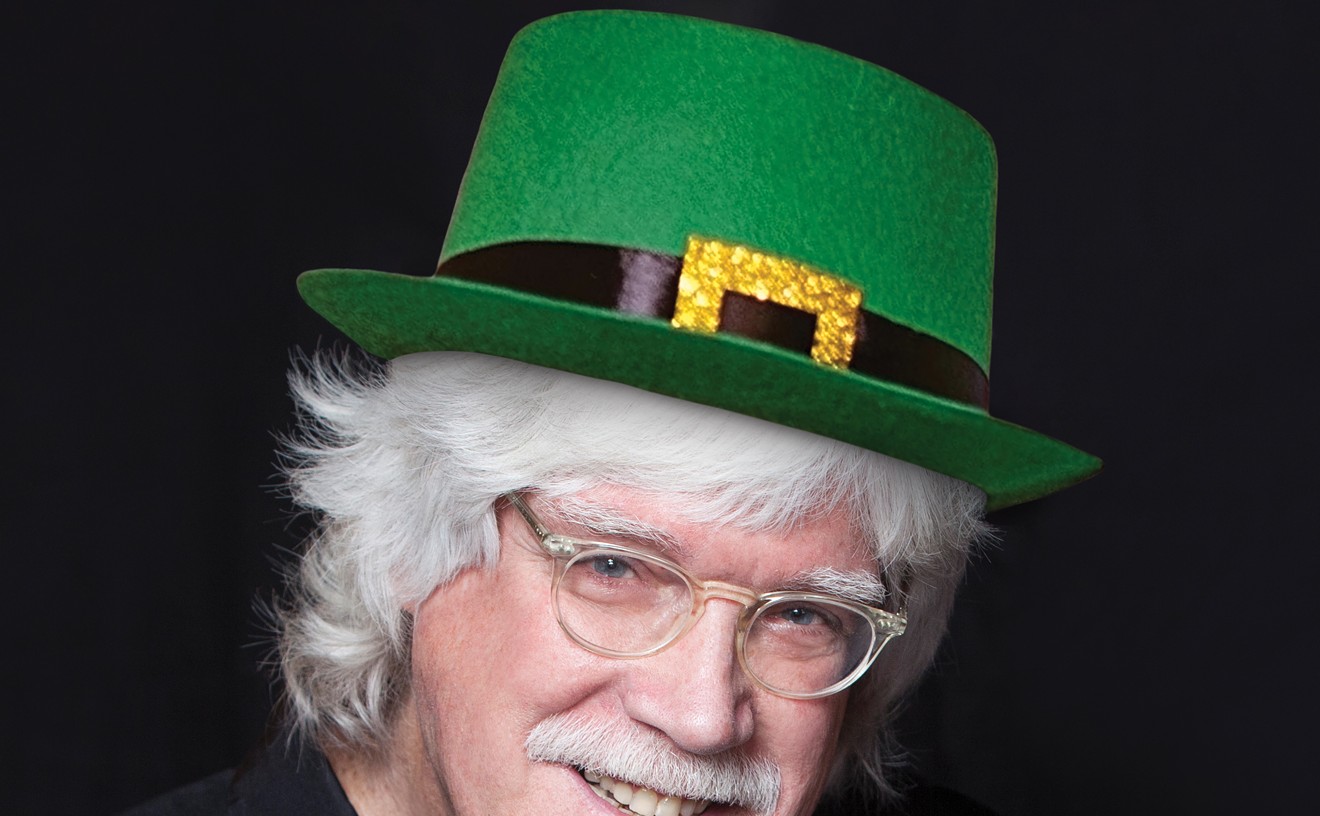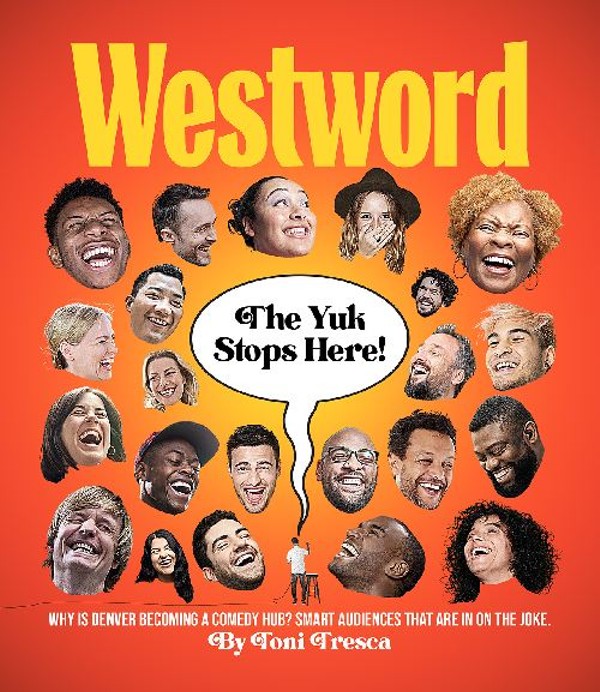Quentin Tarentino’s The Hateful Eight opens this week, the latest chapter in a long tradition of Westerns filmed in Colorado. The state’s epic scenery has made this a destination for filmmakers for more than a century, and many of them made Westerns.
From film’s beginnings to the early 1960s, Westerns were by far the most popular movie genre in America. The first cameras turned in Denver in 1897, capturing thirty-second “actualities” of such events as Procession of Mounted Indians and Cowboys and Denver Fire Brigade. Pioneering Denver cameraman “Buck” Buckwalter made the first Colorado Western in 1903: Tracked by Bloodhounds; or, A Lynching at Cripple Creek.
The first big cowboy star, “Bronco Billy” Anderson, filmed several movies in and around Golden in the fall of 1909. He enlisted the help of the four Morrison brothers — Pete, Carl, Chick and Bob — whose father’s ranch grew into the town of the same name. Pete went Hollywood and was a prominent screen cowboy, appearing in 204 silent Westerns for Universal between 1918 and 1926.
Another horse-opera hero, Tom Mix, filmed in Canon City in the summers of 1911 and 1912. In 1914, the Selig-Polyscope Company moved into the same town, to make a Western titled Across the Border. On July 1, a tragic filming accident killed the leading lady, Grace McHugh, and cameraman Owen Carter.
The logistical problems of filming in Colorado were not cost-effective to solve, and filming waned in the state until after World War II. Now competing against television, movies fought back with color and spectacle, and improvements to the highway system made prime Colorado locations much more accessible.
Since then, though the decline of the Western genre itself (not to mention better incentives offered by other states) has decreased the number of Western films made here. Will a successful run of The Hateful Eight stimulate more Westerns — not to mention other films — being made here? Colorado looks great on the big screen, as evidenced by this list of the best Westerns filmed in Colorado – so far.
10) The Great K & A Train Robbery (1926)
Fourteen years after making a few short films in Colorado, the famous silent-film cowboy star Tom Mix returned to the state to shoot this feature film. It’s a spectacular, with awesome views of Glenwood Canyon. Mix’s film persona was a gregarious, happy-go-lucky showoff, and he opens this film by riding a primitive zip line from the top of the canyon to the bottom, right onto the back of his faithful friend, the Wonder Horse Tony (who received equal billing, by the way). Tom’s a detective who must impersonate a bandit in order to catch the real crooks!
9) Colorado Territory (1949)
Eight years after he made the gangster classic High Sierra, director Raoul Walsh remade it as a Western, with Joel McCrea in Bogart’s role. It’s the story of a recently released criminal who wants to go straight, but finds it impossible. He decides to do one last job, with the usual consequences. A hard-bitten Western noir, it’s also the first American film to be banned in West Germany, due to its anti-social tendencies.
8) The Naked Spur (1953)
Director Anthony Mann and Jimmy Stewart made four Westerns between 1950 and 1955 that changed the genre. Though shot in color and in widescreen, they are dark, morally ambiguous films in which Stewart plays a tormented anti-hero. This is the best of them, a disquisition on evil, necessity, revenge and redemption in the form of a thrilling adventure. Stewart and two other impromptu bounty hunters struggle with and over a perfectly evil, smooth-talking villain (Robert Ryan) who’s wanted dead or alive for a $5,000 reward.
7) The Searchers (1956)
This is only the best American film ever made. John Ford’s fable of prejudice and revenge holds John Wayne’s best performance as the haunted Ethan Edwards. A young girl is kidnapped by Indians, provoking a years-long search – but is the goal to save her or kill her? There’s not a wasted shot in this gorgeous film, and it creates a believable world fully inhabited by a cast of Ford regulars. Above all, it examines unsparingly the complex, forbidden impulses that underlies one man’s race hatred.
6) Saddle the Wind (1958)
Probably the first Method Western. Doughy-faced Western leading man Robert Taylor is the hero, but his life is turned upside down when his crazy younger brother, played by John Cassavetes, shows up. “He’d try anything with a gun – or with a woman!” Cassavetes loose and over-emotional acting style contrasts distinctly with Taylor’s stolid, old-school presence. Co-star Julie London sings the eponymous theme song.
5) How the West Was Won (1962)
This 162-minute Cinerama epic needed three directors to make it – George Marshall, John Ford and Henry Hathaway – and used three cameras, set side-by-side, to record an extra-wide image. Covering American history from 1839 to 1889, it’s one of the last of the deluxe, all-star-cast “road shows” that Hollywood tried as counterprogramming to the inroads of television. Sheer cost, immense problems with syncing the three screens, and the inability to shoot close-ups were just some of the problems that made this the last Cinerama feature film.
4) Cat Ballou (1965)
A comedy Western that won Lee Marvin an Oscar for his role as the drunken gunman Kid Shelleen. Jane Fonda is a proper young lady who turns outlaw after railroad thugs murder her father. Hijinks ensue. Silly fun with the genre.
3) True Grit (1969)
A great film for John Wayne, who bagged his Oscar for his work in this film; it's problematic otherwise. Charles Portis’s novel is well-adapted, but the casting of Kim Darby and Glen Campbell in key roles undermines the movie. A young girl enlists two unlikely companions in her quest to avenge the death of her father. Filmed in one of the most beautiful places on Earth, the San Juan Mountains near Ouray.
2) Butch Cassidy and the Sundance Kid (1969)
A buddy-film Western, part Hope-Crosby road movie that confounded the critics and made tons of money. The fictionalized adventures of Colorado’s own Butch Cassidy and his pals, starring the unbeatable combination of Paul Newman and Robert Redford. “Think you used enough dynamite, there, Butch?”
1) The Cowboys (1972)
One of the Duke’s last Westerns, The Cowboys features him as a hard-bitten rancher who needs cowboys to drive his herd to market after all his hired hands go off in pursuit of a gold strike. He’s forced to hire a bunch of schoolboys, including first-time actor Robert Carradine. With the help of chuck-wagon cook/guru Roscoe Lee Browne, they succeed – until a bunch of varmints led by Bruce Dern interfere. In fact, Dern’s character kills Wayne’s.
When Wayne told Dern, “America will hate you for this,” Dern replied: “Yeah, but they’ll love me in Berkeley!”
[
{
"name": "Air - MediumRectangle - Inline Content - Mobile Display Size",
"component": "12017618",
"insertPoint": "2",
"requiredCountToDisplay": "2"
},{
"name": "Editor Picks",
"component": "17242653",
"insertPoint": "4",
"requiredCountToDisplay": "1"
},{
"name": "Inline Links",
"component": "18838239",
"insertPoint": "8th",
"startingPoint": 8,
"requiredCountToDisplay": "7",
"maxInsertions": 25
},{
"name": "Air - MediumRectangle - Combo - Inline Content",
"component": "17261320",
"insertPoint": "8th",
"startingPoint": 8,
"requiredCountToDisplay": "7",
"maxInsertions": 25
},{
"name": "Inline Links",
"component": "18838239",
"insertPoint": "8th",
"startingPoint": 12,
"requiredCountToDisplay": "11",
"maxInsertions": 25
},{
"name": "Air - Leaderboard Tower - Combo - Inline Content",
"component": "17261321",
"insertPoint": "8th",
"startingPoint": 12,
"requiredCountToDisplay": "11",
"maxInsertions": 25
}
]


